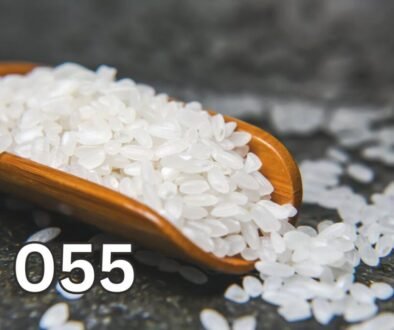Stop! Don’t Eat It! Discover the Truth About Fake Foods

24 DECEMBER 2024
The Truth About Food Fraud: Are You Really Getting What You Pay For?
Have you ever stopped to think about whether the honey in your cupboard or the vanilla extract in your baking is truly the real deal? Surprisingly, many of the foods we trust may not be as authentic as we believe, and selling these products as long as the packaging discloses their authenticity (or lack thereof) is entirely legal, even if it feels misleading. Why? The answer often boils down to profit.
But let’s be clear: outright mislabelling to pass off a product as something it’s not is illegal. Food fraud, whether through legal loopholes or outright deception, affects about 1% of the global food industry. That might not sound like much, but with a potential annual cost of $40 billion, the financial stakes are staggering.
Why Food Fraud Thrives
Whenever a cheaper product can be disguised as something more expensive, fraudsters see an opportunity. This problem is especially rampant with high-value goods like olive oil, seafood, and spices, where the profit margins are significant. But it’s not just your wallet at risk. Food fraud has serious consequences for your health. Mislabelled ingredients can cause severe allergic reactions, deprive us of key nutrients, or even lead to illness or death.
What Exactly Is Fake Food?
Fake food refers to anything that isn’t what it claims to be, whether through sneaky packaging, substitution, or outright fraud. When you purchase one of these items, you’re being duped into paying for something entirely different from what you intended to buy.
A Deeper Dive: What’s Really in Our Food?
So, which types of counterfeit foods are slipping into our supermarkets, restaurants, and kitchens? And how do these food fraudsters get away with it? In the sections ahead, we’ll uncover these mysteries and share tips on how to protect yourself from falling victim to food fraud.
Extra Virgin Olive Oil: The Gold Standard of Cooking Oils
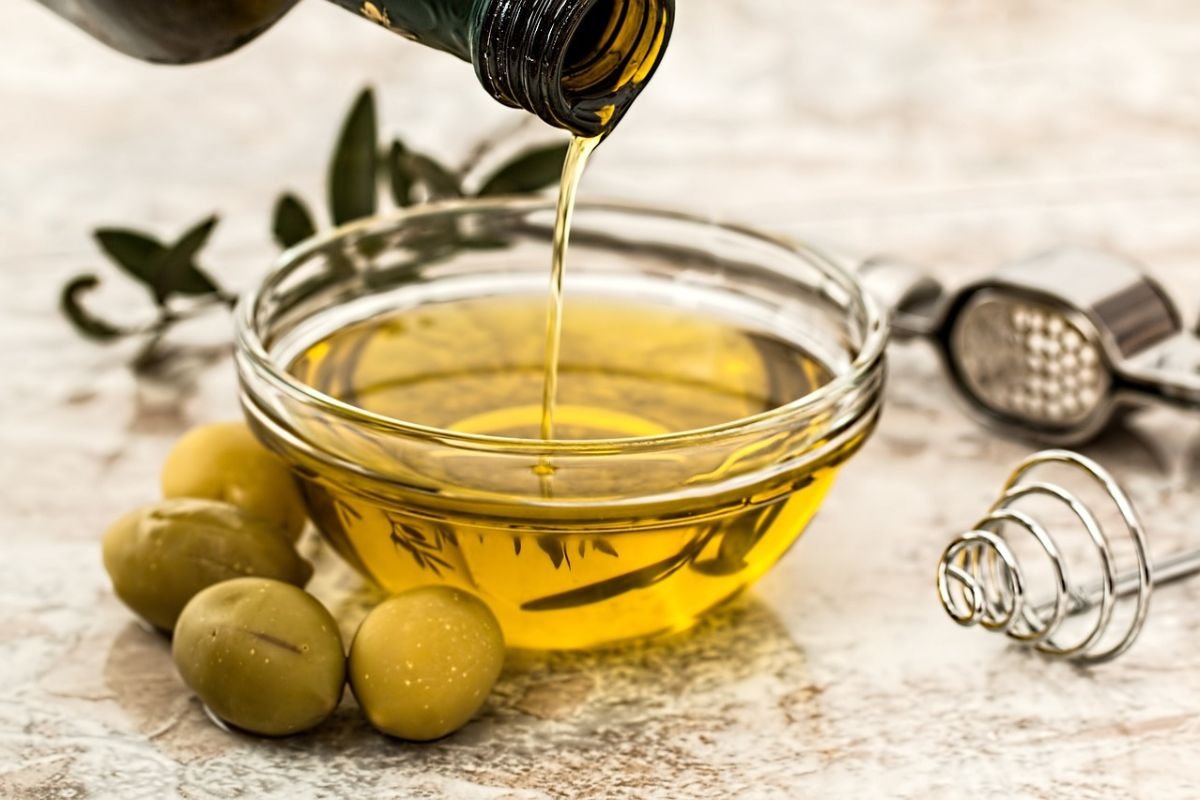
Extra Virgin Olive Oil (EVOO) is celebrated for its robust flavour, nutritional benefits, and versatility in the kitchen. But its high value also makes it a prime target for counterfeiters. Let’s explore how authentic EVOO is made and how to spot fakes in the crowded oil aisle.
The Journey from Olive to Oil
Real EVOO starts with carefully harvested ripe olives, primarily from Mediterranean regions like Spain, Italy, and Greece. The harvesting process, which takes place between November and January, often uses vibrating machines to gently shake the fruit from the trees.
Here’s a glimpse of the production process:
- Collection and Transport: Freshly picked olives are loaded into trailers and rushed to processing facilities to preserve their quality.
- Cleaning and Grinding: The olives are washed and ground into a thick paste.
- Extraction: Using massive decanters, the oil is separated from the paste, yielding pure, unadulterated EVOO.
- Bottling: The oil is then pumped into storage before being bottled, often in dark glass containers to protect it from light.
This minimal processing, without excessive heat or chemicals, preserves EVOO’s distinct flavour, antioxidants, and healthy fats.
The Dark Side of Olive Oil: Adulteration
The high price of EVOO has made it a target for fraud for centuries, dating back to ancient Rome. Today, some counterfeiters go to great lengths to mimic the look and taste of real EVOO.
- Dilution: Lower-grade olive oils or other oils, such as soybean or vegetable, are mixed in and sold as EVOO.
- Artificial Additives: Some fake oils are flavoured with beta carotene and coloured with chlorophyll to replicate the greenish hue of authentic olive oil.
These fraudulent practices not only deceive consumers but also rob them of the health benefits and superior taste associated with genuine EVOO.
How to Identify Authentic EVOO
- Read the Label: Authentic EVOO should have only one ingredient: extra virgin olive oil. Avoid products labelled as “olive oil blend” or “light olive oil.”
- Check the Date: Look for a “pressed-on” date. Since European olives are harvested in the fall and winter, a bottle purchased in August should ideally be less than a year old. Older oils lose flavour and nutritional value, so steer clear of bottles more than two years past the pressing date.
- Inspect the Packaging: Dark glass bottles or tins are a good sign, as they protect the oil from light exposure.
- Use Your Senses: Smell: Authentic EVOO has a fresh, fruity, grassy aroma. If it smells rancid or has no smell at all, it’s likely not the real deal.
By taking these steps, you can ensure your EVOO is as pure and flavourful as it’s meant to be.
The Truth About Truffles: Are You Getting the Real Thing?
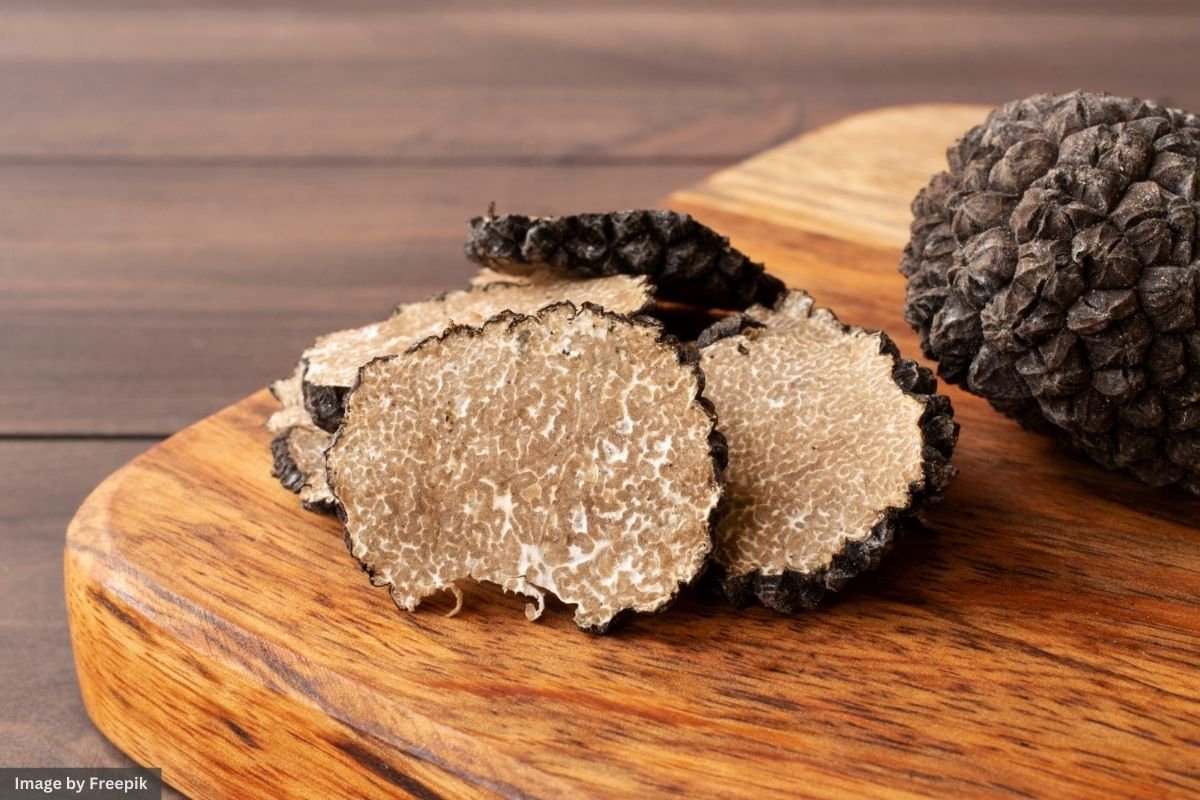
Truffles, the culinary treasures of the food world, are rare and expensive for good reason. These fungi grow underground, nestled near the roots of specific trees, in places like Italy, France, or even the UK. Unlike an apple that’s easily plucked from a branch, truffles require a trained nose, once pigs, now mostly dogs, to locate them. But finding them is only half the battle. Harvesting unripe truffles is a waste, so timing is everything.
Once a truffle is unearthed, its quality starts to diminish. The clock begins ticking, and every moment out of the ground matters. This fleeting nature only adds to their mystique, and their cost.
Farming Truffles: An Attempt to Meet Demand
To make truffles more accessible, farmers have figured out how to cultivate black truffles, which now account for 80% of the supply. But even with this innovation, it can take up to six years for these fungi to mature. White truffles, however, remain elusive. Farming attempts have largely failed, keeping their price sky-high and creating opportunities for fraud.
The problem? Truffles are often harvested and sold in unmarked bags, making it easy for less scrupulous sellers to substitute cheaper varieties. While these substitutes are still technically truffles, they pale in comparison to their premium counterparts.
Truffle Oil: A Sneaky Impostor
If truffle fraud feels shady, truffle oil takes deception to another level. Authentic truffle oil should be made by infusing high-quality oil with real truffles. But here’s the catch: many bottles on store shelves don’t contain any truffle at all.
Instead, these oils are often made with olive or sunflower oil, artificially flavoured with a synthetic compound called “2,4-Dithiapentane.” This chemical mimics the earthy aroma of truffles but has an unsettling connection, it’s also found in the compound responsible for foot odour. No wonder some truffle oils smell oddly like gas or have an artificial taste.
How to Spot Fake Truffle Oil
Don’t be fooled by clever packaging. If you see terms like “truffle flavouring,” “aroma,” or “essence” on the label, you’re likely dealing with a synthetic product. Want a foolproof method to ensure your truffle experience is authentic? Opt for fresh truffles shaved right before your eyes.
Coffee Beans: A Brew Worth Investigating
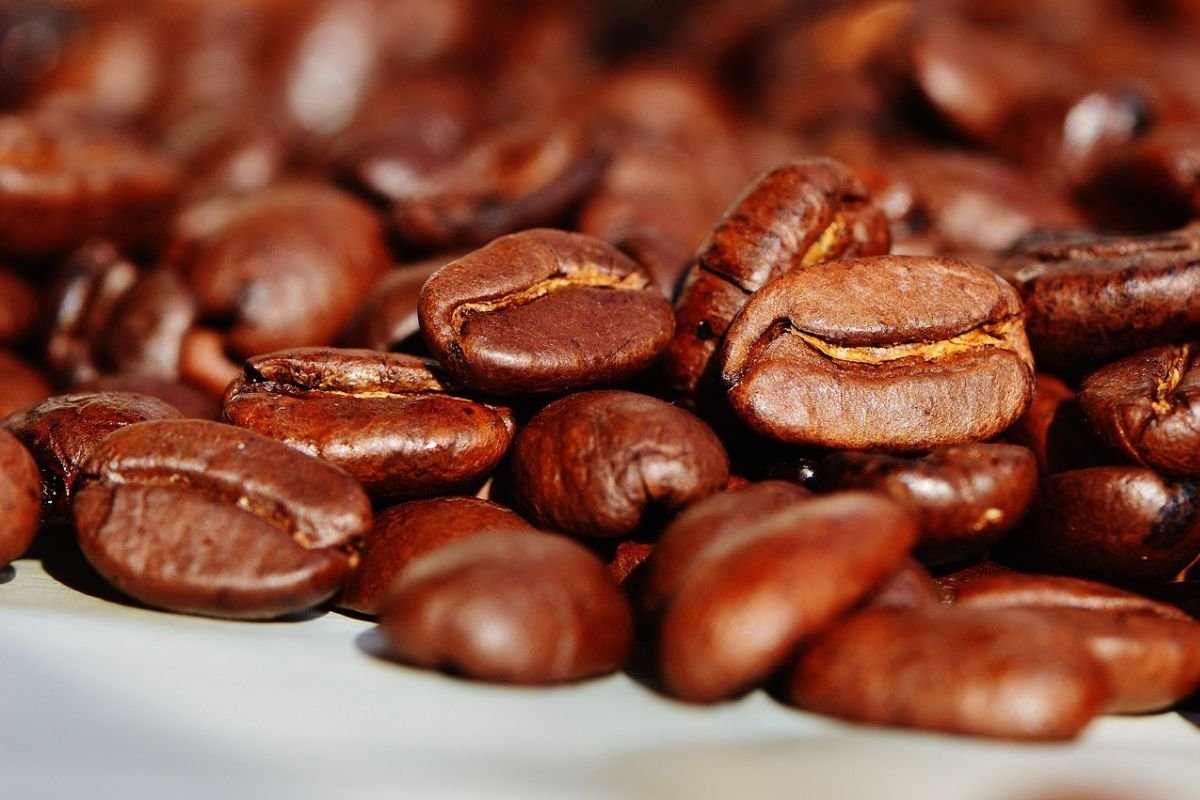
When you brew your morning coffee, do you know what’s truly in your cup? While many of us trust the labels promising premium Arabica or exotic Kopi Luwak, the reality can sometimes be less savoury, ground acorns, barley, twigs, or even sawdust have been found in counterfeit coffee products.
The Price of Real Coffee
Producing high-quality coffee is no small feat. It starts with handpicking only the ripest coffee cherries, a meticulous process requiring precision and speed. Each pound of coffee beans requires over 1,500 cherries, and these cherries must be processed immediately to avoid fermentation, which can spoil their taste.
From there, the cherries undergo careful processing and roasting, adding to the time and cost. All this labour makes coffee production expensive, and unfortunately, it creates opportunities for fraud.
The Shortcuts that Compromise Quality
Large-scale coffee farms often harvest entire trees, collecting both ripe and unripe cherries in one go. While not illegal, this practice significantly lowers the coffee’s quality. More concerning are counterfeit practices, where cheaper beans, or worse, non-coffee fillers, are passed off as premium varieties.
Some fraudsters blend lower-grade coffee beans into bags labelled as high-quality, duping consumers into paying a premium for a substandard product. The problem is exacerbated by the difficulty of tracing coffee’s origin.
Climate Change: Brewing Trouble for Coffee Lovers
The coffee industry faces another challenge: climate change. Experts predict that by 2050, around half of the land currently suitable for coffee cultivation will no longer be viable. As the supply tightens, the temptation for fraudsters to cut corners or mislead customers is likely to grow.
How to Brew With Confidence
To avoid falling victim to counterfeit coffee:
- Buy Whole Beans: Whole beans are harder to manipulate than pre-ground coffee.
- Shop Smart: Purchase from trusted brands or local roasters with transparent sourcing practices.
- Look for Certifications: Certifications from organizations like the Specialty Coffee Association (SCA) can help verify the coffee’s authenticity and quality.
While coffee’s journey from cherry to cup is complex, choosing wisely ensures your morning brew is as authentic and satisfying as you deserve.
Maple Syrup: Liquid Gold or a Sticky Scam?
Maple syrup is a breakfast staple beloved for its rich, complex flavour, but did you know that as much as half of what’s labelled as “100% maple syrup” might actually be fake? Authentic maple syrup is a labour of love, crafted from the sap of sugar maple trees. The process involves tapping the trees to collect sap, boiling it to concentrate the natural sugars, and then filtering and bottling the syrup, all within a tight six-hour window to ensure quality.
Canada is the world’s maple syrup powerhouse, producing 85% of the real supply. But the effort is no small feat: it takes an astonishing 44 gallons of sap to produce just 1 gallon of maple syrup. This labour-intensive process explains why authentic maple syrup often costs about six times more than the sugary substitutes labelled as “pancake syrup.”
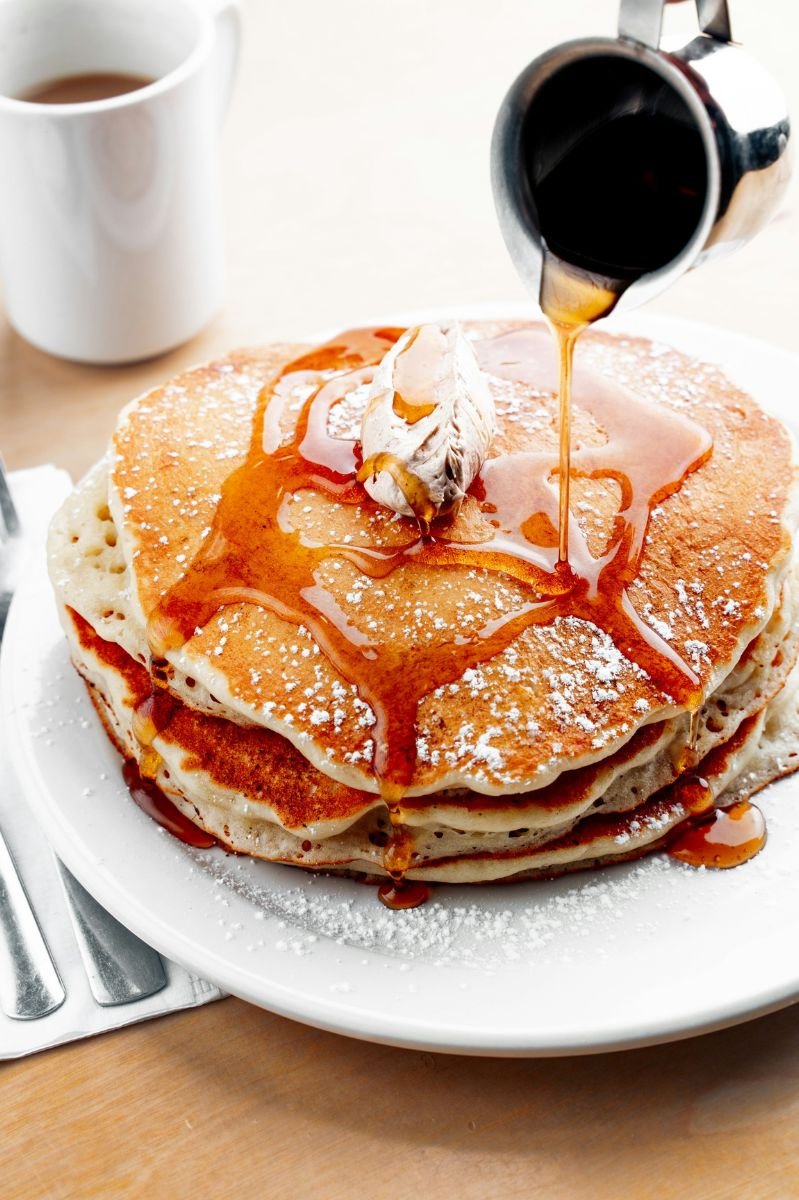
The Rise of Imitation Syrups
The more affordable option on store shelves, imitation maple syrup, is usually a mix of corn syrup, high-fructose corn syrup, caramel colour, and artificial flavourings. While this concoction might mimic the taste of real syrup, it’s a far cry from the genuine article. Thankfully, most imitation syrups are legally labelled as “pancake syrup” or “maple-flavoured syrup,” making it easier to spot them. True maple syrup will always say “100%” or “pure” on the label, with just one ingredient listed: maple syrup.
The Dark Side of Maple Syrup Fraud
Unfortunately, not all cases of fake maple syrup are above board. Some companies engage in illegal practices, bottling imitation syrup and falsely labelling it as “100% pure maple syrup” to rake in higher profits. These fraudulent products not only mislead consumers but also damage the reputation of genuine producers.
If you’re ever unsure about your syrup’s authenticity, look at its consistency. Real maple syrup is typically thinner than corn syrup-based imitators. And remember, the label is your best friend: pure maple syrup should only list one ingredient, maple syrup or maple sap.
Parmesan Cheese: The Gold Standard of Authenticity
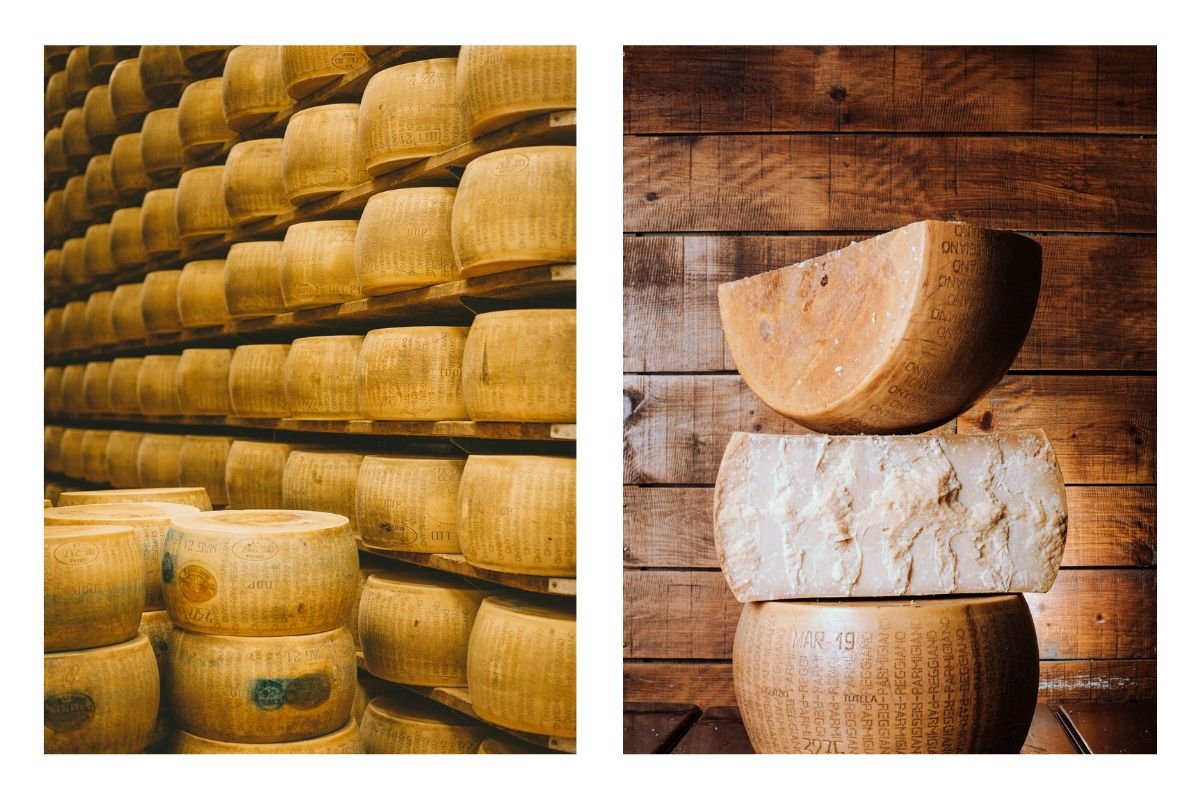
Parmigiano-Reggiano, often referred to as “Parmesan cheese,” is a true gem in the culinary world. Its authentic version can only be crafted by about 300 certified dairies in Emilia-Romagna, Italy, adhering to strict regulations. This is the only region in the world where the trio of bacteria necessary to create Parmigiano-Reggiano’s signature taste naturally exists.
These bacteria ferment the milk, transforming it into a cheese with a unique aroma, rich flavour, and unforgettable umami. The process takes time, at least a year of aging is required for those delightful crunchy crystals to form. These crystals, made up of amino acids, are what give Parmigiano-Reggiano its signature nutty complexity. Some wheels are aged for as long as ten years, growing richer and more valuable with time.
How Parmesan Gets Lost in Translation
The rise of pre-grated Parmesan cheese has opened the door to widespread fraud. Fillers like rice flour or cellulose (a plant-based anti-caking agent often derived from wood pulp) are legally allowed but must remain within 2-4% of the cheese’s total weight. Unfortunately, some companies exploit these regulations by exceeding the limits or not disclosing the actual percentages.
In the most extremes cases, fraudsters mix other cheeses, such as cheddar or Swiss, with cellulose, labelling the product as “100% Parmesan Cheese.” Some estimates suggest that fraudulent Parmesan sales cost Italy’s Parmigiano-Reggiano industry around $2 billion annually.
How to Spot the Real Deal
To ensure you’re getting authentic Parmigiano-Reggiano:
- Avoid Pre-Grated Varieties: These are more likely to include fillers.
- Look for the Rind: A genuine wheel or wedge of Parmigiano-Reggiano will feature a dotted inscription on the rind. Wedges should have at least a small piece of this marked rind visible.
- Check for the PDO Label: The Protected Designation of Origin (PDO) label guarantees the cheese was made in its designated Italian region under strict standards.
- Inspect the Ingredients: True Parmigiano-Reggiano contains only cow’s milk, salt, and rennet. Fillers or extra ingredients are red flags.
Finally, trust your taste buds! Depending on its age, authentic Parmigiano-Reggiano delivers a fruity, nutty flavour and satisfying crunch from its crystals, qualities no imitation can replicate.
Wasabi: The Impostor in Plain Sight
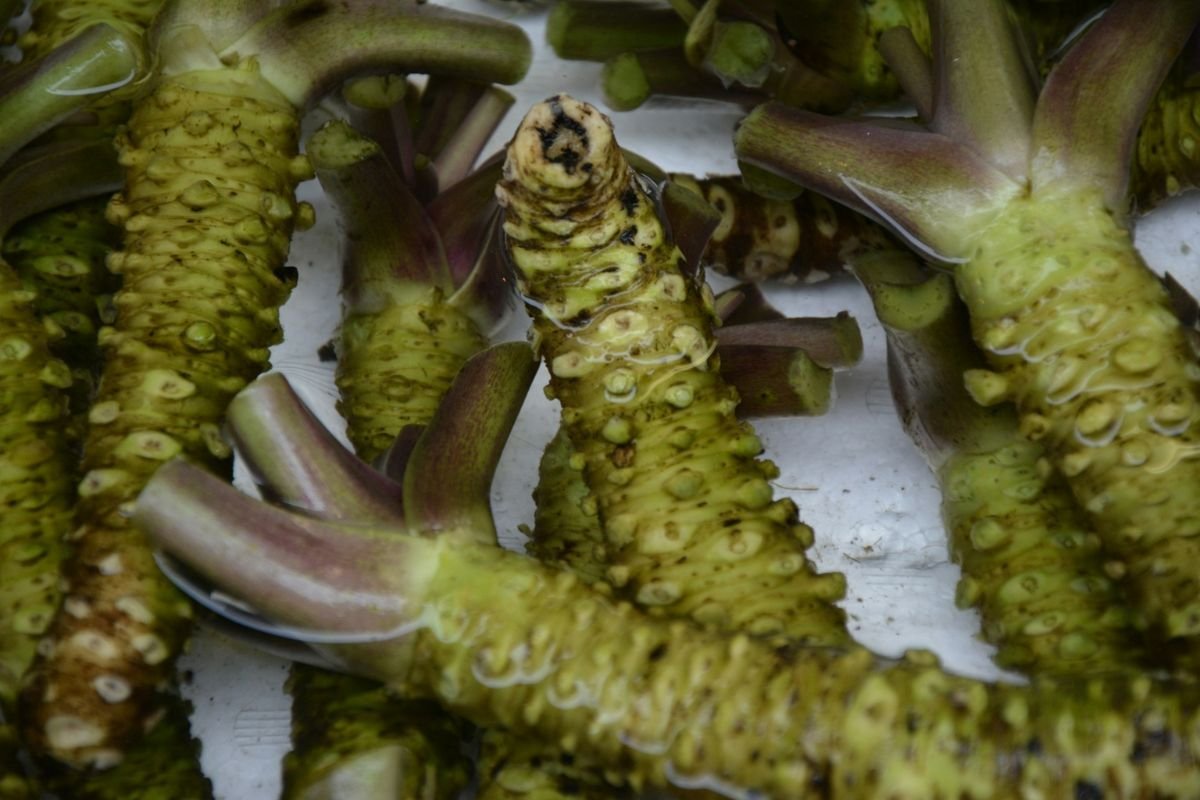
When you reach for wasabi at your favourite sushi spot, chances are it’s not the real thing. In fact, wasabi might be the most widely faked food on this list. What often passes as wasabi is a blend of horseradish, mustard powder, sweeteners, starch, and green food colouring. While it’s legally labelled as “prepared wasabi” if the ingredients are correctly listed, it’s nothing like the authentic version.
Why Real Wasabi Is So Rare
Genuine wasabi, known as wasabia japonica, is a luxury item. Grown naturally along mountain springs in Japan, it requires just the right combination of mild temperatures, shade, and gravel-rich soil. These specific conditions make it one of the most challenging crops to cultivate commercially.
Even with modern farming techniques, growing wasabi is no small feat. The Wasabi Company in the UK, the first commercial grower in Europe, has successfully replicated Japanese conditions. Still, it takes 18 months for the plants to mature. No wonder real wasabi can cost between £125 and £250 per kilo!
How to Spot the Real Deal
The most valuable part of the wasabi plant is its stem, which is grated into a paste using a special fine-toothed grater. The process results in a pale green paste with a slightly grainy texture. Its flavour is fresh and vibrant, delivering a clean, sharp heat that fades quickly.
In contrast, imitation wasabi often has a smoother texture, an artificially bright green colour, and a harsher, lingering heat, thanks to its horseradish base. If your wasabi isn’t grated fresh before your eyes, it’s almost certainly the fake variety.
Vanilla: The World’s Favourite Flavour, Often Imitated
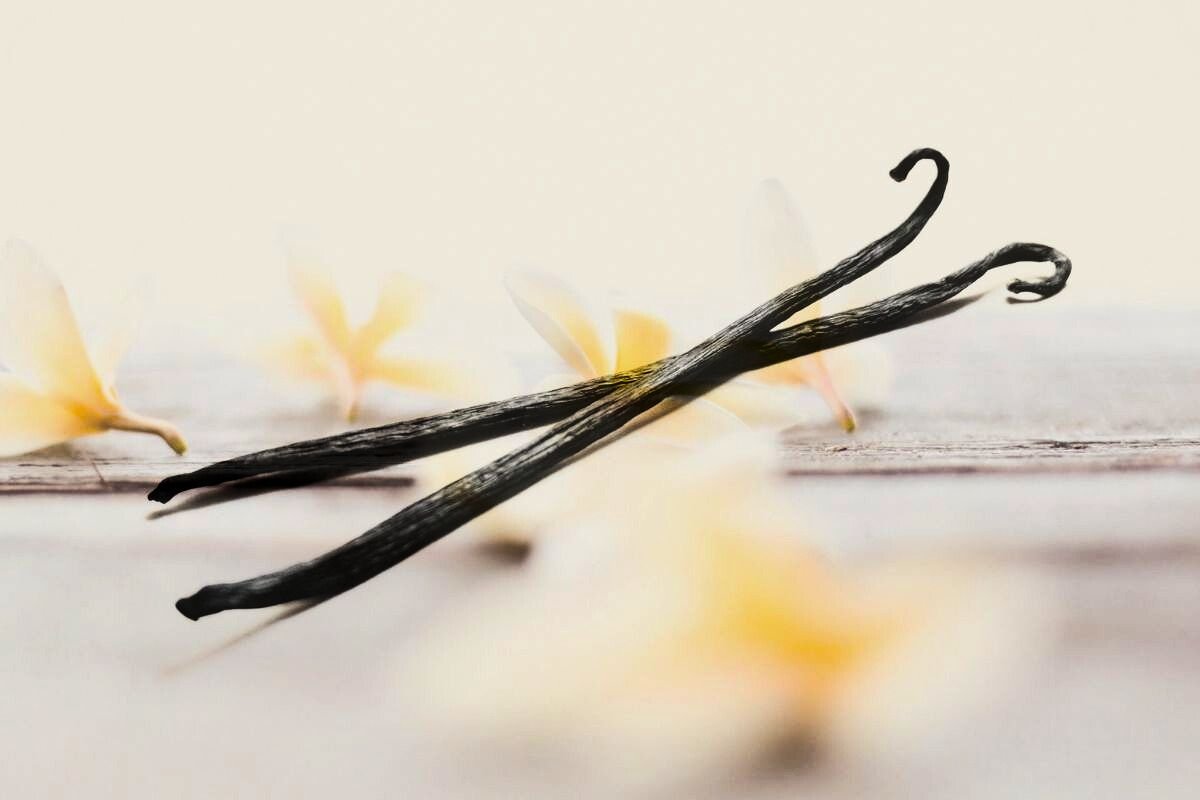
Did you know that only about 1% of vanilla products globally are made from real vanilla? Authentic vanilla is an extraordinary rarity, with around 80% of the world’s supply coming from Madagascar. The process of creating genuine vanilla is as intricate as it is fascinating, making the real thing truly precious.
The Art of Real Vanilla Production
Vanilla begins with the hand-pollination of delicate orchid flowers, a labour-intensive practice mastered by farmers in Madagascar. The resulting beans, or pods, hold little value until they undergo a meticulous curing process that unlocks their distinctive aroma and flavour.
Here’s how it’s done:
- The beans are boiled, sun-dried, and wrapped in blankets to “sweat.”
- Workers hand-massage each pod to release vanillin, the compound responsible for vanilla’s signature fragrance.
- Over several months, the pods develop their rich flavour profile.
- Finally, the beans are soaked in a mixture of alcohol and water to produce pure vanilla extract.
The Rise of Imitation Vanilla
Due to the labour-intensive nature of authentic vanilla production, imitation vanilla dominates the market. Synthetic vanillin, the key aromatic compound, is often derived from petroleum, clove oil, wood, or bark. This lab-made alternative is perfectly legal, provided it is labelled as “artificial flavouring.”
However, not all imitations are safe. In 2008, certain products labelled as vanilla in Mexico were discovered to be made from tonka beans, a cheaper alternative. Tonka beans contain coumarin, a toxic substance banned in the U.S. and E.U. because it can harm those on blood thinners. These counterfeit products made their way into the U.S. market, raising serious safety concerns.
How to Spot Authentic Vanilla
To ensure you’re enjoying the real deal, check the ingredient list carefully:
- Authentic Vanilla: Look for labels that say “vanilla bean extractives” or “pure vanilla extract.”
- Imitation Vanilla: Be wary of terms like “natural flavouring,” as this can include synthetic compounds.
When it comes to vanilla, knowing what to look for ensures both safety and flavour authenticity.
Caviar: The Ultimate Luxury at Risk of Imitation
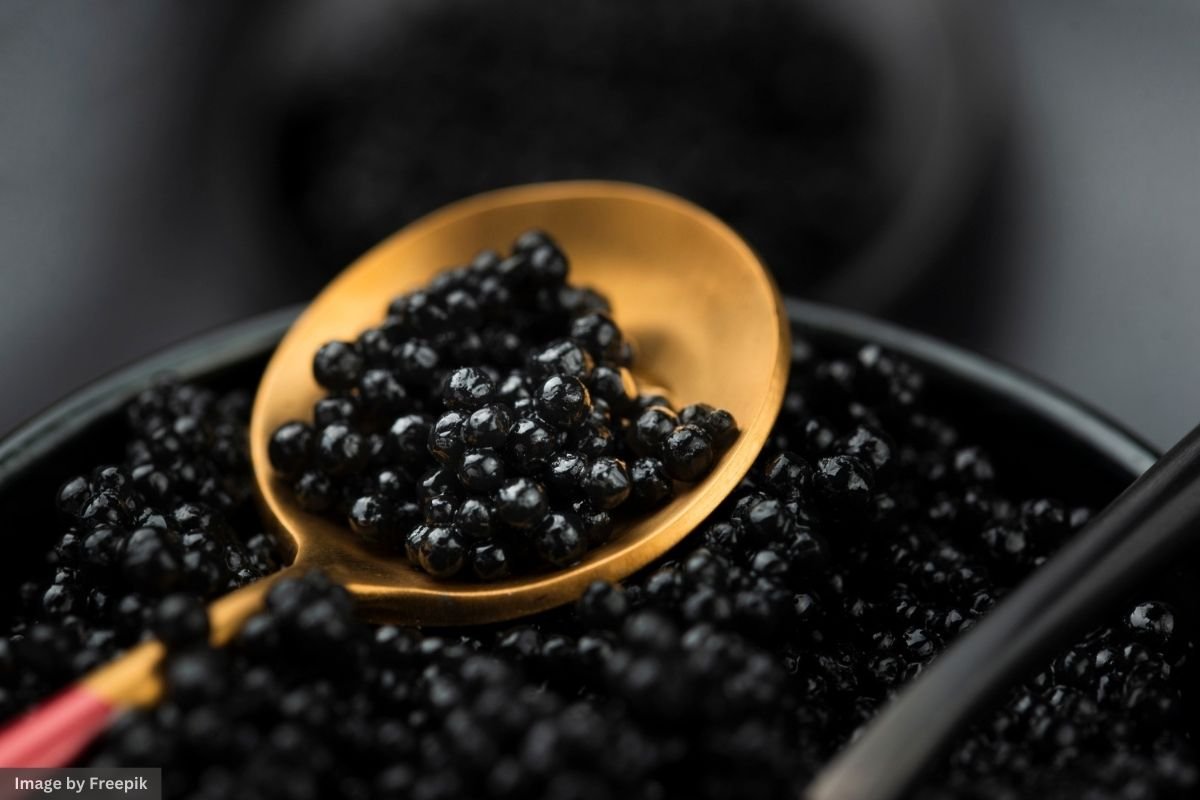
Caviar, synonymous with luxury and exclusivity, is a prime target for fraudsters. With prices for the finest varieties, like Beluga, Ossetra, and Sevruga sturgeon caviar, soaring up to $24,000 per kilogram, it’s no wonder counterfeit versions flood the market.
Why Caviar Is So Expensive
Authentic caviar is made from the roe of sturgeon, a critically endangered species. These fish take a decade or more to mature before they can produce the prized roe. The process of harvesting is delicate:
- The egg sac is carefully removed.
- The roe is rubbed over a metal grate to separate the eggs.
- The eggs are lightly salted to preserve them without breaking.
A mere 2-ounce jar of genuine sturgeon caviar can fetch $175 in high-end markets like New York City. This exclusivity and the labour-intensive process make it a target for counterfeiting.
How Fraudsters Fake Caviar
Counterfeit caviar comes in two forms:
- Substitutes from Cheaper Fish: Salmon, lumpfish, or paddlefish eggs are often passed off as sturgeon caviar.
- Mislabeled Products: Low-grade caviar might be marketed as premium imported varieties, such as “white sturgeon caviar,” to deceive buyers.
Spotting the Real Deal
Because appearance alone can be deceptive, use these methods to ensure authenticity:
1. Check the Label
- Look for the species explicitly listed (e.g., Beluga, Ossetra, Sevruga).
- Ingredients should include only fish roe, salt, and occasionally borax as a preservative. Avoid products with artificial colours or flavours.
2. The Hot Water Test
- While wasteful, this test can reveal fakes. Real caviar hardens when exposed to hot water, while fake versions dissolve.
3. Inspect the Appearance
- Genuine caviar is glossy, uniformly sized, and consistent in colour. Counterfeits often look dull and have irregular shapes.
4. Taste and Smell
- Authentic caviar offers a rich, buttery flavour with a fresh hint of the sea. Fake caviar lacks complexity and may have an overly fishy or unpleasant smell.
Protecting Your Purchase
For the best experience, buy caviar from reputable sellers or brands with clear sourcing and labelling. When it comes to caviar, investing in quality is worth it to avoid being duped by cheap imitations.
Honey: Nature’s Sweetest Treasure
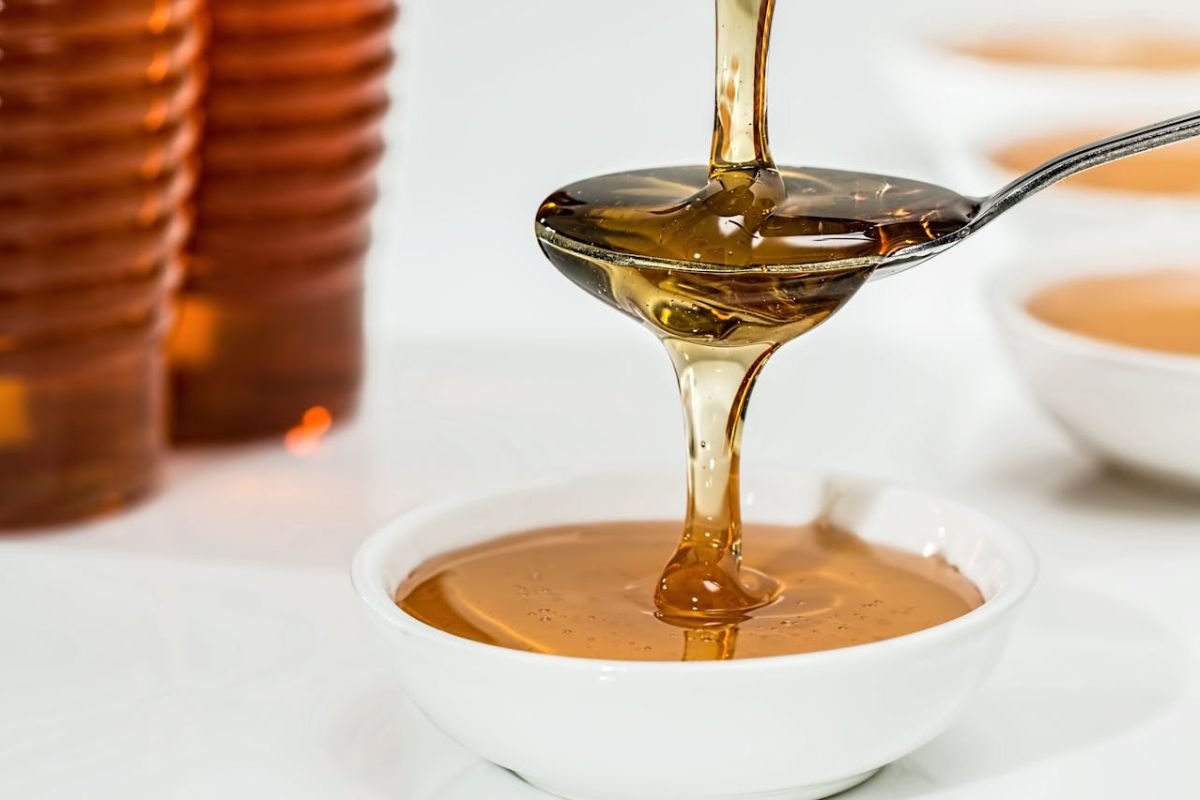
Honey is one of nature’s purest gifts, but producing the real deal takes time, patience, and a lot of buzzing bees. Unfortunately, it’s also one of the most counterfeited foods in the world. Let’s dive into what makes honey authentic and how to avoid falling for fake alternatives.
The Art of Real Honey Production
Real honey starts with hardworking bees collecting nectar from flowers. Through a process of regurgitation and evaporation, bees transform this nectar into honey, storing it neatly in wax-sealed honeycombs. Beekeepers step in to harvest this treasure with care:
- Protective suits shield them from stings.
- Smokers calm the bees as honeycomb frames are gently removed.
- A scraper removes the wax seal, and a centrifuge spins the frames to release the honey.
This intricate, time-intensive process means that honey production is naturally limited.
The Fake Honey Problem
Shockingly, more honey is sold globally than bees can possibly produce. How is this possible? Counterfeit honey, made with cheap syrups like high-fructose corn syrup, rice syrup, or cane sugar syrup, floods the market. Some products even mix a small amount of real honey with other sweeteners or syrups, stretching the supply and misleading consumers.
Fraudulent labelling is another issue. Counterfeiters may falsely advertise their products as “organic,” “raw,” or even premium varieties like “Manuka honey” to inflate prices. These practices not only undermine the work of honest beekeepers but also deceive consumers who are seeking quality and authenticity.
How to Spot Real Honey
To avoid being tricked into buying counterfeit honey:
1. Read the Label
- Authentic honey should have only one ingredient: honey. Steer clear of products labelled as “blends” or those with added sweeteners.
2. Shop Smart
- The best option is to buy raw honey directly from local producers or trusted farmers’ markets. Although it might cost more, you’re paying for quality and peace of mind.
Simple At-Home Honey Tests
If you’re unsure about the authenticity of your honey, try these easy experiments:
- Water Test: Drop a spoonful of honey into a glass of water. Pure honey will settle at the bottom and dissolve slowly, while fake honey may mix quickly or form layers.
- Flame Test: Dip a cotton wick into the honey and try lighting it with a match. Pure honey burns cleanly, but adulterated honey may produce crackling sounds or fail to ignite due to added moisture. Warning: Exercise caution while performing the flame test. Keep flammable materials away and ensure you conduct it in a safe, controlled environment.
By staying informed and vigilant, you can ensure the honey you buy is as pure as nature intended.
Saffron: The Gold of Spices

Saffron holds the crown as the world’s most expensive spice, and for good reason. This luxurious ingredient comes from the delicate stigma of the Crocus sativus flower, and its production is nothing short of laborious.
The Journey from Flower to Spice
Each Crocus sativus flower takes two years to mature before it can be harvested. Each bloom yields only three tiny, fragile strands of stigma. Farmers must painstakingly handpick these strands, then carefully dry them to create saffron. To put its rarity into perspective, approximately 75,000 flowers are needed to produce a single pound of saffron. This meticulous process justifies saffron’s high price and unparalleled status.
The Dark Side: Saffron Counterfeiting
Saffron’s value has unfortunately attracted counterfeiters who mimic its vibrant red threads with far less savoury substitutes. Adulterated saffron often contains materials like dyed hay, corn silk threads, horsehair, or even coconut filaments. Some fraudsters mix fake strands with genuine saffron, while others produce entirely artificial products.
Spotting the Real Deal
If you’ve already bought saffron, the water test can help determine its authenticity:
- Place a few strands in water or milk.
- Real saffron will slowly release a rich yellow hue and a distinct aroma over several minutes while maintaining its form.
- Fake saffron will disintegrate quickly, releasing an unnatural red or orange colour almost immediately.
Shopping Smart: Protecting Your Purchase
Before you even get to the water test, buying wisely is key. To ensure authenticity:
- Look for certifications like PDO (Protected Designation of Origin) or PGI (Protected Geographical Indication), which guarantee quality and origin.
- Pay attention to the packaging. Genuine saffron is sold in small, airtight containers to preserve its freshness and quality. Avoid loose or unsealed saffron.
- Check the region of origin. Renowned saffron-producing areas include Iran, Spain, Kashmir, and Greece. Products that transparently list these locations are more likely to be authentic.
Saffron’s luxurious flavour and colour make it worth the investment, but only if it’s real. With these tips, you can enjoy the spice’s golden glow in your dishes with confidence.
Fish Fraud: The Hidden Catch
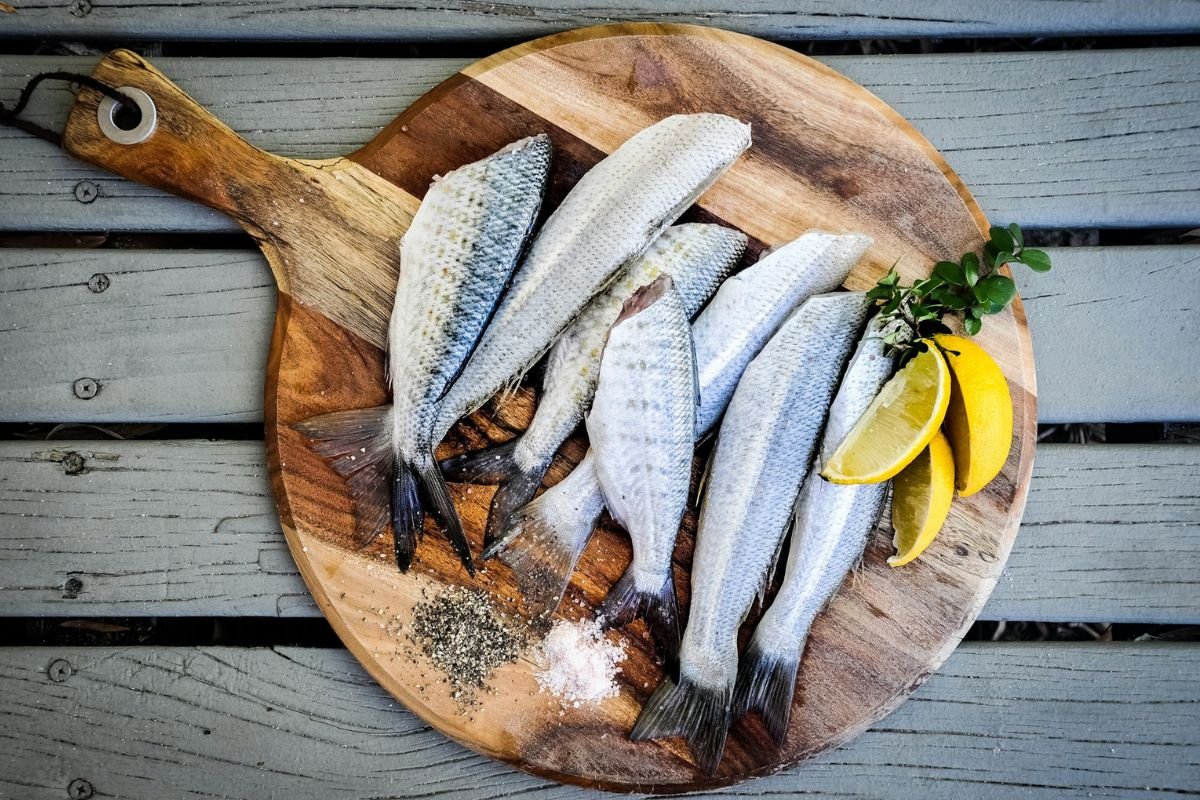
Fish is treasured for its nutritional benefits, especially its high-quality protein and omega-3 fatty acids. Yet, identifying one type of white fish from another can be a daunting task unless you’re a fishmonger or chef. Unfortunately, this reliance on grocery store labelling leaves many consumers vulnerable to fraud.
Common Tricks in Fish Fraud
One of the most widespread scams is the substitution of cheaper fish for more expensive varieties. For example, tilapia or catfish might masquerade as grouper or snapper, deceiving buyers into paying premium prices.
Another tactic involves misrepresenting the fish’s origin or production method. Fish may be falsely labelled as “wild-caught” when it’s actually farm-raised or listed as originating from a different country with lax regulations. These misrepresentations exploit consumer preferences for sustainably sourced or premium-quality fish.
Hidden Additives and Unsafe Practices
Some fraudulent sellers go a step further by using additives like phosphates to retain water, increasing the fish’s weight, and their profit. Colourants are sometimes added to improve the fish’s appearance, making it look fresher than it is.
Perhaps the most dangerous deceit involves selling frozen fish as fresh. Repeated cycles of freezing and thawing can compromise the fish’s texture, flavour, and, most importantly, its safety.
How to Avoid the Fraud
- Shop Smart: Buy from trusted fish markets or seafood retailers with a good reputation.
- Look for Certifications: Labels from organisations like the Marine Stewardship Council (MSC) or Aquaculture Stewardship Council (ASC) ensure that the fish meets rigorous standards for sustainability and traceability.
- Ask Questions: Engage with your fishmonger. Inquire about the fish’s origin, whether it’s wild or farm-raised, and if it carries certifications. Reliable sellers are usually transparent and willing to provide these details.
By staying informed and asking the right questions, you can reel in fresh, authentic seafood while avoiding counterfeit catches.
Whiskey: Liquid Gold or Fool’s Gold?
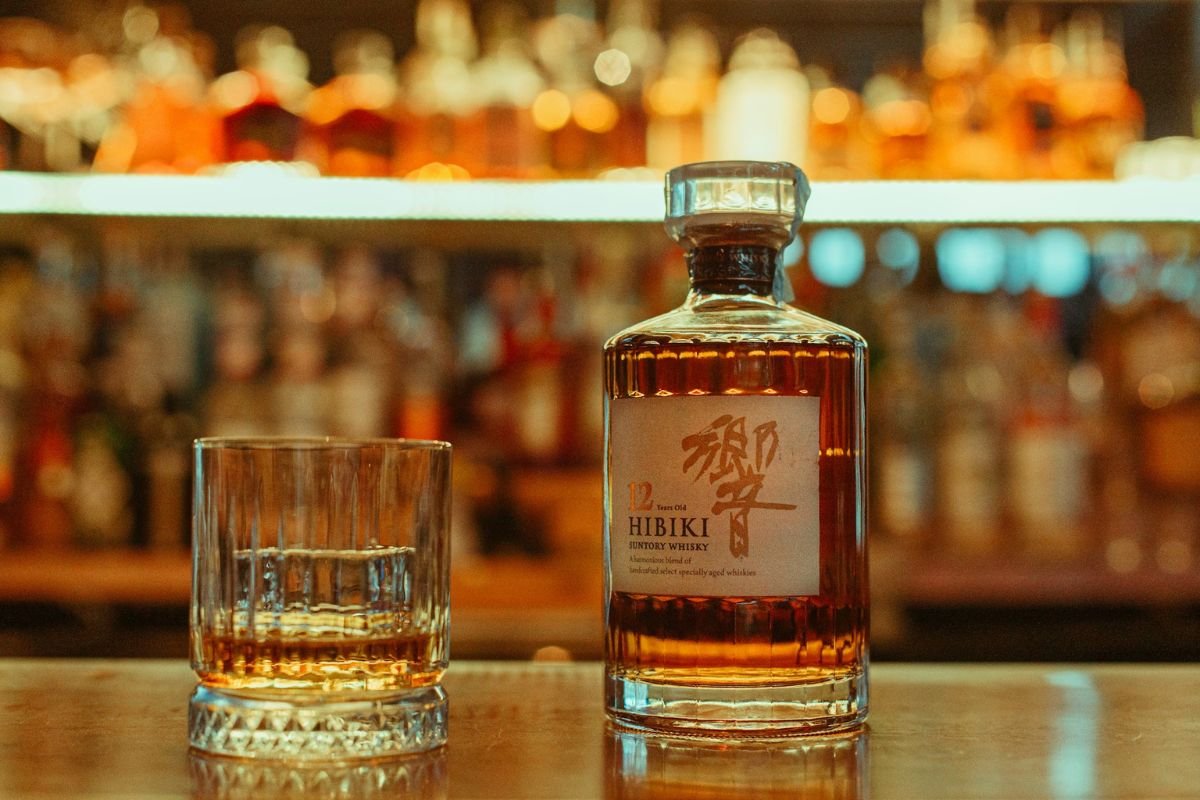
Whiskey is the most frequently counterfeited alcohol in the world. Its high market value, global appeal, and collectible status make it an enticing target for fraudsters. But with the legal market already generating substantial profits, why do criminals bother with counterfeiting? The answer lies in the time-intensive and intricate process required to produce authentic whiskey, which counterfeiters eagerly bypass for quick financial gains.
The Art of Whiskey-Making
Creating real whiskey is a labour of love, involving several meticulous steps:
- Malting: Barley grains are soaked in water to germinate, activating enzymes that convert starch into fermentable sugars.
- Mashing: The malted barley is dried, ground, and mixed with hot water to extract sugars, forming a mash.
- Fermentation: The mash is cooled, and yeast is added to transform sugars into alcohol, creating a liquid known as “wash.”
- Distillation: The wash is distilled, often twice, in copper stills to concentrate alcohol and remove impurities.
- Aging: The distilled spirit matures in oak barrels for years, absorbing flavours and developing its characteristic colour. Aging times vary, with Scotch requiring at least three years and bourbon at least two.
- Bottling: The aged whiskey is diluted to the desired alcohol content, filtered, and bottled for sale.
While fermentation and distillation take only a couple of weeks, the aging process spans years, sometimes decades, making authentic whiskey both time-consuming and expensive to produce.
The Tricks of the Trade: How Counterfeits Are Made
Premium whiskey varieties, like aged Scotch and bourbon, come with hefty price tags. This makes them prime targets for counterfeiters, who employ methods such as:
- Dilution: Mixing genuine whiskey with water or lower-quality spirits to increase volume.
- Artificial Enhancements: Using artificial flavours and dyes to mimic the taste and appearance of aged whiskey.
- Reusing Packaging: Refilling genuine bottles with fake whiskey to make counterfeits appear legitimate.
These fraudulent tactics exploit both the intricacy of whiskey-making and the consumer’s trust in premium branding.
How to Spot the Real Deal
Here’s how you can protect yourself from falling for fake whiskey:
- Shop Smart: Buy from established and reputable retailers, whether online or in-store.
- Inspect Packaging: Check for signs of tampering, such as broken seals, poorly applied labels, or mismatched caps.
- Verify Authenticity Marks: Many premium whiskey brands include holograms, QR codes, or serial numbers. Use these to confirm authenticity through the brand’s official website or app.
- Beware of Bargains: If the price seems too good to be true, it probably is. Authentic premium whiskey demands a premium price.
By staying vigilant, you can ensure your prized bottle of whiskey isn’t just good-looking on the outside but also authentic inside.
Will Food Fraud Ever Be Stopped?

In a perfect world, food fraud would disappear. If greed vanished, profit margins shrank to insignificance, or punishments for fraud became severe, we might see an end to the practice. But realistically, these scenarios are far from achievable in today’s society.
The Hidden Toll of Food Fraud
Measuring the true impact of food fraud is nearly impossible. Much of the deception goes undetected, allowing fraudsters to thrive. The allure of high profits and the relatively low risk of being caught perpetuate this cycle. Even when perpetrators are exposed, the consequences are often minor, fines that are just a fraction of their illegal earnings.
Compare this to drug crimes: a heroin smuggler faces severe penalties, often including long prison sentences. But someone importing millions of dollars’ worth of adulterated honey? They might face nothing more than a fine and a tarnished reputation. Society views food fraud as a lesser crime, prioritising drug enforcement over safeguarding the food supply.
Why Food Fraud Is Dangerous
Food fraud doesn’t just hit us in the wallet, it can threaten health and safety. Imagine a bottle of extra virgin olive oil secretly replaced with peanut oil. For someone with a severe peanut allergy, this deception could be life-threatening.
Even if the health risks don’t affect everyone, food fraud undermines trust in producers and businesses, tarnishing entire industries.
Addressing Food Fraud: Where Do We Begin?
At its core, food fraud is fuelled by greed, cutting corners to increase profits and exploit market demand. Tackling it requires more than consumer vigilance, it calls for systemic change:
- Stronger Regulations and Enforcement: Laws need to be tightened, with stricter penalties for those caught engaging in fraud.
- Improved Transparency and Traceability: Supply chains should implement advanced technologies, such as blockchain, to ensure products can be tracked from origin to shelf.
- Collaboration Across Stakeholders: Governments, industries, and consumers must work together to create a united front against food fraud.
- Robust Whistleblower Protections: Insiders who report fraudulent practices should be protected and incentivised to speak up.
The Role of the Consumer
Despite all efforts, it’s unlikely that food fraud will ever disappear completely. This makes consumers the last line of defence. Awareness and education are critical. Here’s how consumers can help:
- Learn to Identify Fraud: Be vigilant about product labels, certifications, and prices that seem too good to be true.
- Report Suspicions: Robust reporting mechanisms can help authorities take action against fraudulent practices.
Ultimately, addressing food fraud requires collective action. When governments, businesses, and consumers come together, progress is possible. By staying informed and holding producers accountable, we can help reduce the reach of fake food and protect the integrity of what’s on our plates.

